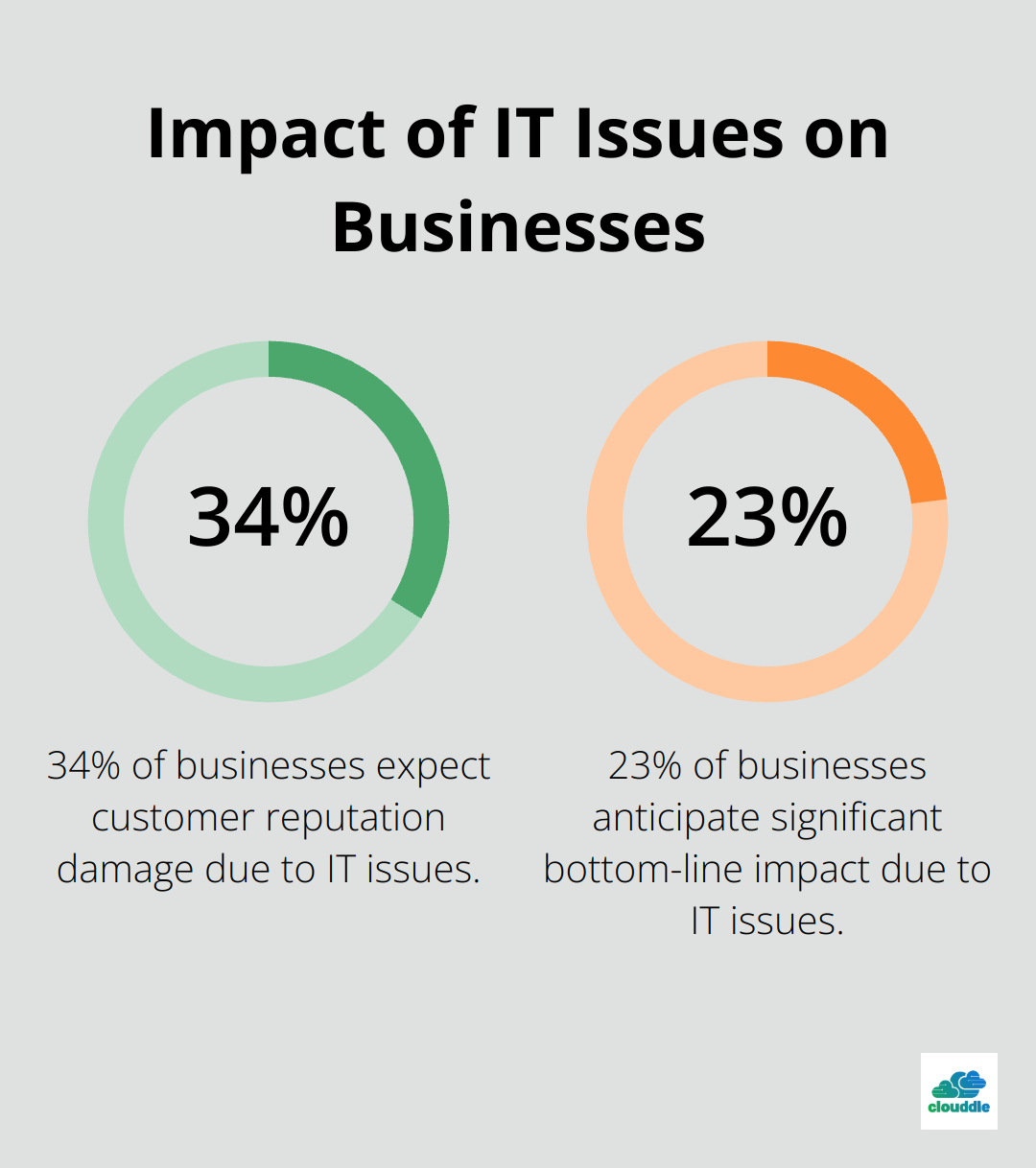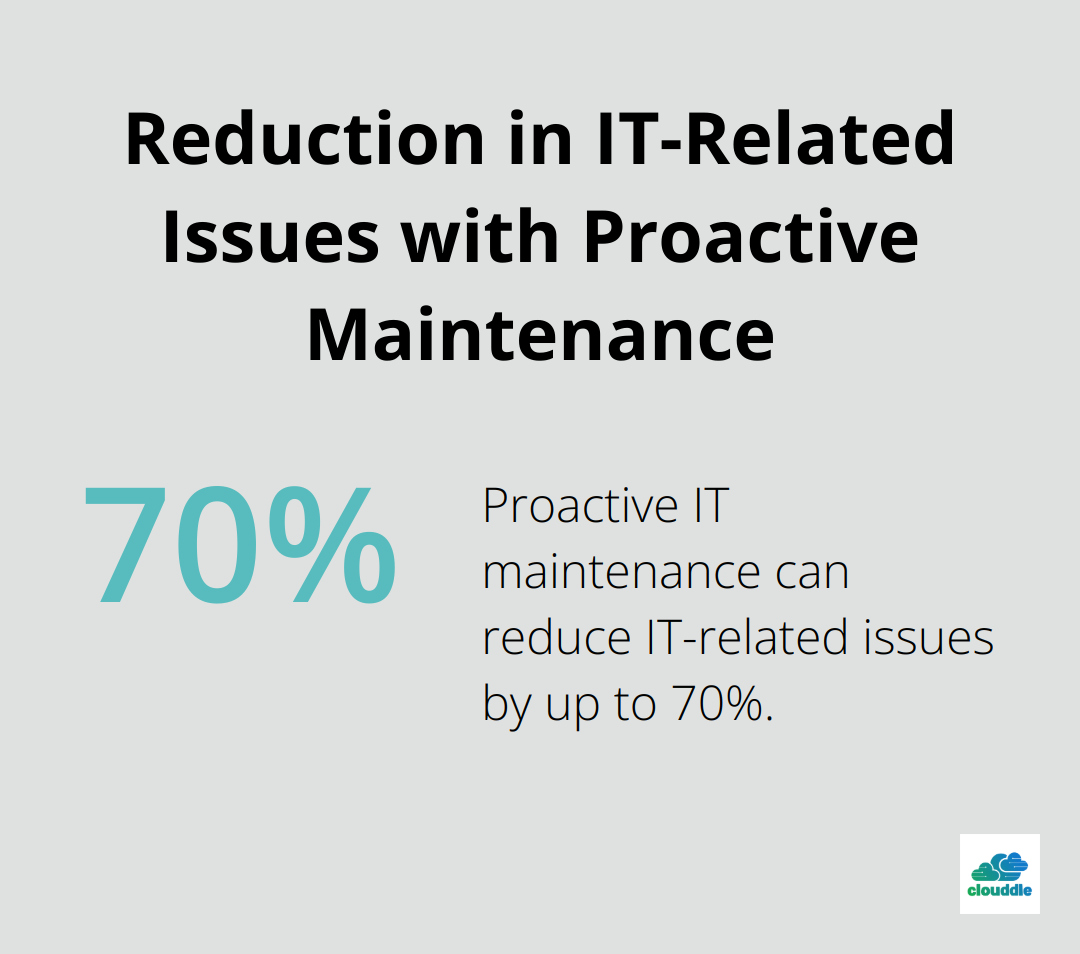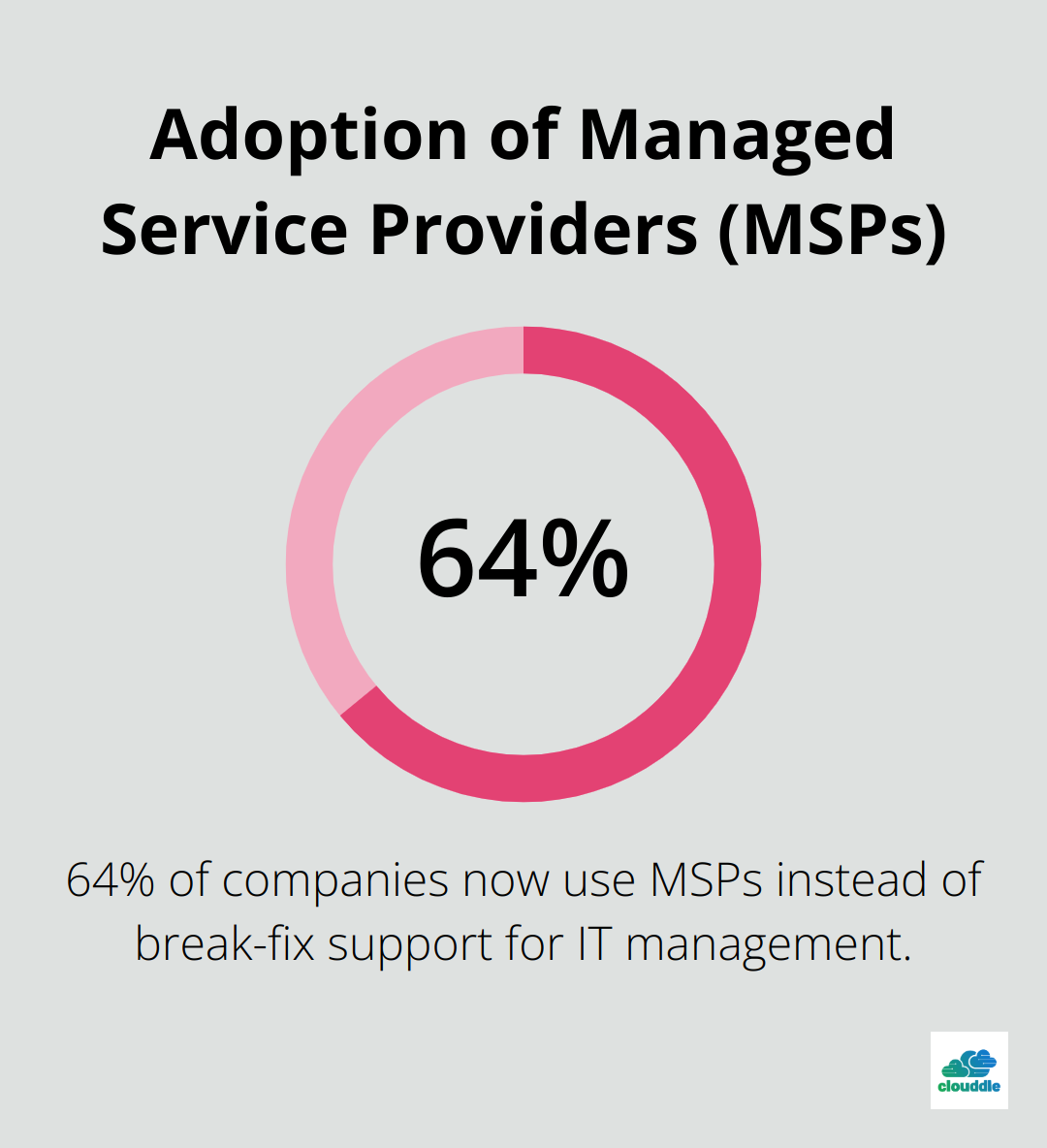Choosing the right managed IT service plan can be overwhelming for businesses of all sizes. With countless options available, it’s crucial to find a solution that aligns perfectly with your company’s unique needs and goals.
At Clouddle, we understand the challenges businesses face when selecting managed IT service plans. This guide will walk you through the key factors to consider, ensuring you make an informed decision that enhances your IT infrastructure and supports your long-term success.
What Are Your Business IT Needs?
Evaluate Your Current IT Setup
Take stock of your existing IT infrastructure. List all your hardware, software, and network components. This includes computers, servers, routers, and any cloud-based services you use. Note the age and condition of each item. A Techaisle survey of 600 small businesses indicates that 34% expect customer reputation damage and 23% anticipate significant bottom-line impact due to IT issues.
Pinpoint Your IT Pain Points
Identify areas where your current IT setup falls short. Do you experience frequent downtime? Is your data backup system reliable? Do employees complain about slow internet speeds? These pain points indicate where you need improvement.

Map Out Your Future IT Landscape
Consider your business growth plans for the next 3-5 years. Will you expand to new locations? Increase your workforce? Launch new products or services? These factors will significantly impact your IT needs. If you plan to adopt more cloud-based services, you’ll need a managed IT service provider with strong cloud expertise.
Assess Your Cybersecurity Needs
In today’s digital landscape, cybersecurity is non-negotiable. Evaluate your current security measures and identify any gaps. This emphasizes the need for robust security measures regardless of company size.
Consider Compliance Requirements
If your industry is subject to specific regulations (like HIPAA or PCI DSS), ensure your IT plan can support compliance. Non-compliance can result in hefty fines and reputational damage.
A thorough assessment of your business IT needs will equip you to choose a managed IT service plan that aligns with your current requirements and future goals. This groundwork will help you communicate your needs effectively to potential service providers. Now that you’ve identified your needs, let’s explore the key features to look for in managed IT services.
What Features Define Top-Tier Managed IT Services?
Top-tier managed IT services offer several key features that optimize technology infrastructure, ensure smooth operations, and provide a foundation for future growth and security. Let’s explore these essential elements:
Round-the-Clock Monitoring
A critical feature of high-quality managed IT services is 24/7 monitoring and support. This constant vigilance allows potential issues to be identified and resolved before they escalate into major problems. A report from the Ponemon Institute in 2016 raises the average cost of IT downtime to nearly $9,000 per minute. Continuous monitoring significantly reduces this risk and maintains operational continuity.
Proactive Maintenance
Modern managed IT services take a proactive stance, rather than waiting for something to break before fixing it. Regular system updates, software patching, and preventive maintenance are standard practices. A CompTIA report suggests this approach can reduce IT-related issues by up to 70%. The focus shifts from fixing problems to preventing their occurrence.

Robust Cybersecurity Measures
In today’s landscape of evolving cyber threats, strong security measures are essential. Top-tier services offer multi-layered security solutions (including firewalls, antivirus software, and intrusion detection systems) and conduct regular security audits. Cybersecurity Ventures expects global cybercrime costs to grow by 15 percent per year over the next five years, reaching $10.5 trillion USD annually by 2025, underscoring the importance of a comprehensive security strategy.
Scalability for Business Growth
Your IT needs will likely change over time. The best managed IT service plans offer scalability and flexibility, allowing easy addition or removal of services, adjustment of user numbers, and integration of new technologies. This adaptability is particularly important as 45% of companies expect to increase their IT budgets in the coming year (according to Spiceworks Ziff Davis).
Cloud Integration and Data Protection
With the increasing reliance on cloud services, seamless cloud integration and robust data backup solutions are must-have features. IDG’s 2020 Cloud Computing Study found that 81% of organizations have at least one application or a portion of their computing infrastructure in the cloud. Your provider should support your cloud strategy while implementing comprehensive data backup and disaster recovery plans to protect your critical information.
These key features form the backbone of top-tier managed IT services. As we move forward, we’ll explore how to compare different service plans to find the best fit for your business needs.
How Different Managed IT Service Plans Compare
Proactive Management vs. Break/Fix Approach
Many businesses once relied on a break/fix model, calling IT support only when issues arose. This reactive approach often results in costly downtime and unpredictable expenses.
Proactive management prevents issues before they occur. It involves continuous monitoring, regular maintenance, and strategic planning. 64% of companies now use MSPs instead of break-fix support, as the MSP model provides a comprehensive, proactive approach to IT management.

Service Tiers and Pricing Models
Most managed IT service providers offer tiered service levels with distinct pricing models. These tiers typically range from basic monitoring and support to comprehensive, all-inclusive packages.
Entry-level tiers include essential services like network monitoring, basic cybersecurity, and help desk support. Mid-tier options add proactive maintenance, cloud services management, and advanced security features. Top-tier plans offer the full spectrum of IT management, including strategic planning and virtual CIO services.
Pricing models vary but common structures include per-user or per-device pricing, flat-rate monthly fees, or a combination. A ChannelE2E survey indicates the average cost for managed IT services ranges from $100 to $150 per user per month (depending on the service level).
Customization and Flexibility
The best managed IT service providers allow for customization beyond tiered plans. This flexibility ensures you don’t pay for unnecessary services while still receiving comprehensive coverage in critical areas.
When evaluating providers, ask about their ability to tailor services to your specific needs. Consider whether they can integrate with your existing systems or offer industry-specific solutions. The answers to these questions significantly impact the value you receive from your IT service plan.
Service Level Agreements (SLAs)
Service Level Agreements (SLAs) form a critical component of any managed IT service plan. These agreements provide measurable benchmarks, tracking key performance indicators (KPIs) like performance, uptime, and resolution times to help businesses.
Pay close attention to SLA details, particularly regarding response and resolution times for different issues.
When comparing SLAs, look for providers that offer clear, measurable metrics and transparent reporting. This transparency allows you to hold your provider accountable and ensures you receive the service levels you pay for.
Final Thoughts
Selecting the right managed IT service plan will impact your business’s efficiency, security, and growth potential. A thorough assessment of your current IT infrastructure, pain points, and future needs will help you find a plan that aligns with your business goals. We recommend you prioritize key features such as 24/7 monitoring, proactive maintenance, robust cybersecurity measures, scalability, and comprehensive data protection.
When you compare different plans, consider the benefits of proactive management over a break/fix approach. You should evaluate service tiers, pricing models, and customization options to ensure you get the best value for your investment. We suggest you pay close attention to Service Level Agreements (SLAs) as they provide measurable benchmarks for performance and accountability.
At Clouddle, we offer tailored managed IT service plans that meet your specific needs. We combine networking, entertainment, and security services to create seamless operations and increase revenue (without any initial investment). We encourage you to conduct thorough research and consultations as you move forward in your selection process.


